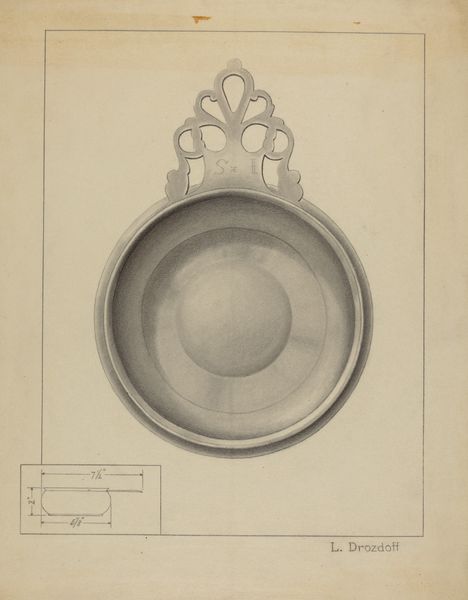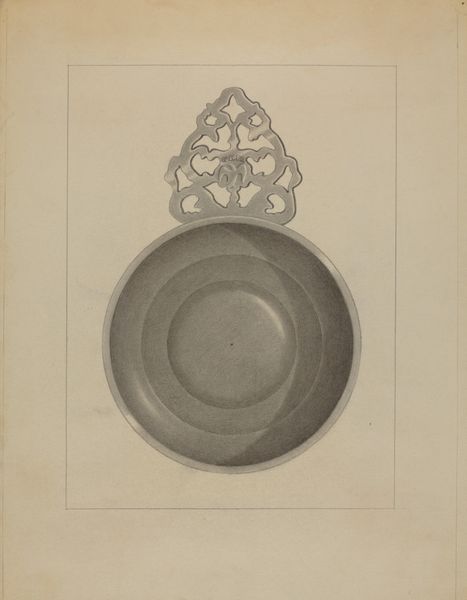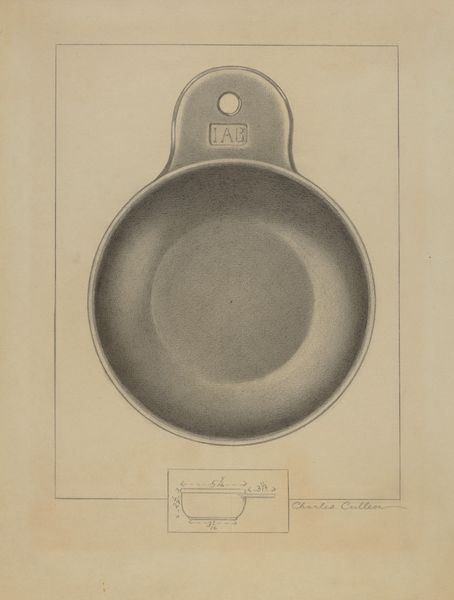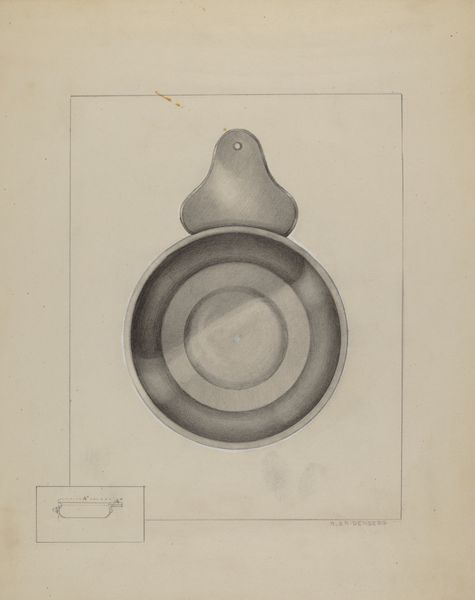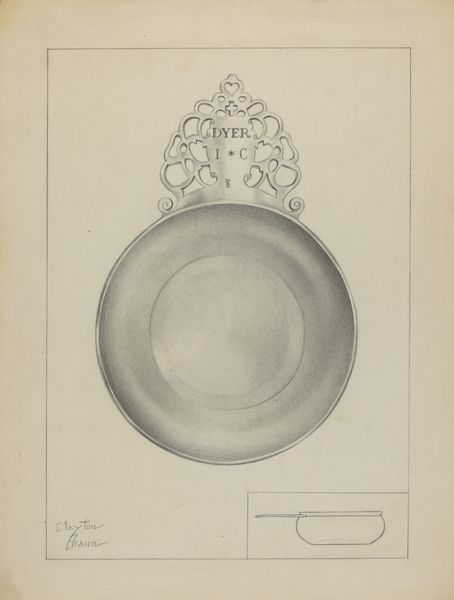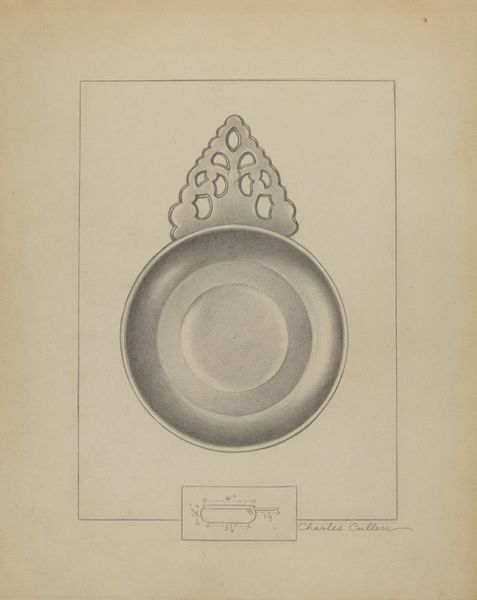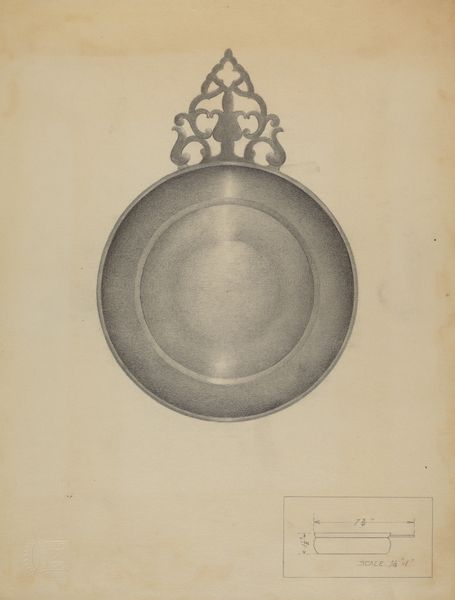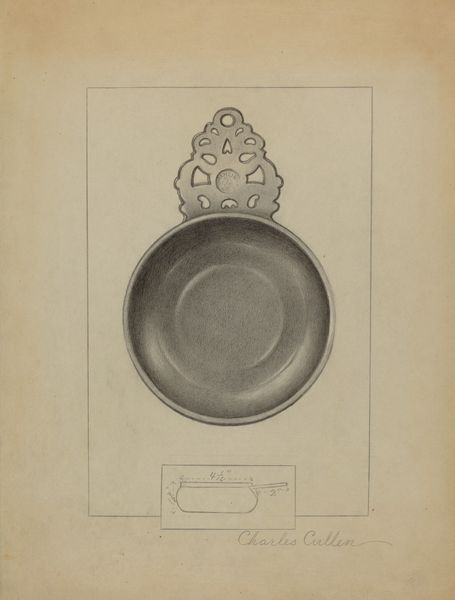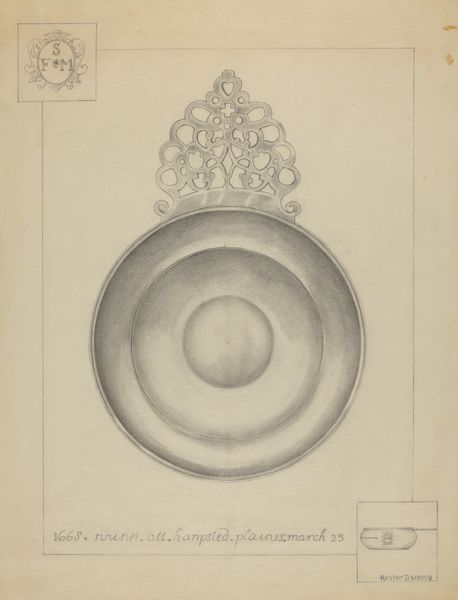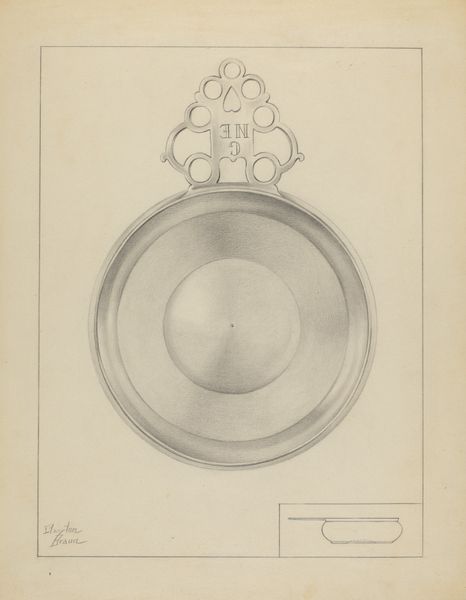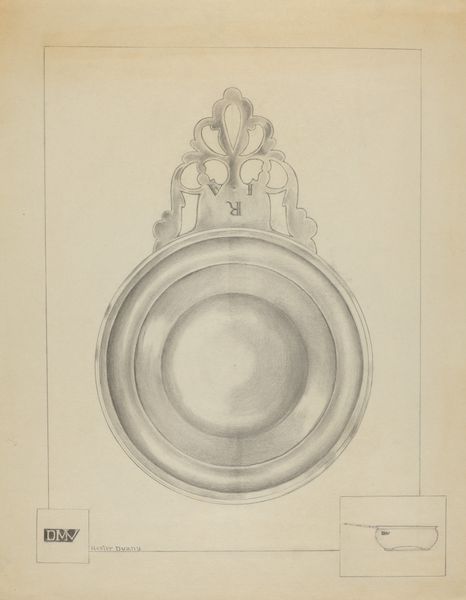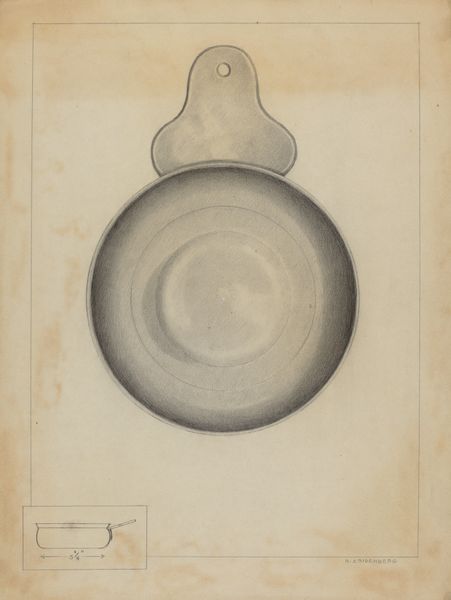
drawing, pencil
#
drawing
#
pencil drawing
#
pencil
#
modernism
#
realism
Dimensions: overall: 28.9 x 23 cm (11 3/8 x 9 1/16 in.) Original IAD Object: 5 1.4" in diameter; 2" high
Copyright: National Gallery of Art: CC0 1.0
Curator: Welcome. Before us we have “Pewter Porringer,” a pencil drawing created around 1936 by Charles Cullen. Editor: Wow, that's quite the technical study! It reminds me of old blueprints or a carefully documented museum artifact. Stark and serene, with a touch of quiet beauty, don’t you think? Curator: Indeed. I’m struck by the cultural implications of focusing on something so seemingly simple. A porringer, after all, signifies domesticity, perhaps childhood. This piece appears in the 1930s during the Great Depression, potentially representing values of simple living in hard times. Editor: Good point! Now I see it differently! There's a quiet humbleness about choosing this particular object to immortalize on paper. And the stark rendering does somehow add this very solemn quality to an ordinary, almost forgotten, object of daily life. Curator: Observe the dedication to precision in the rendering. The light reflecting on the metallic surface, the crispness of the rim—each stroke contributes to a hyper-realistic feel, bordering on formalism. Editor: I love that small schematic he’s added too. It's like a miniature key to the whole image! I imagine Cullen meticulously measuring out every dimension, translating something familiar into exact lines. It is fascinating. Curator: Given the context of the era, Cullen’s choice could also read as a quiet commentary on labor. This could be a quiet dedication to artisanship, and traditional craftsmanship when mass production was coming. Editor: Absolutely, and it kind of pushes against a throwaway culture! Now it invites me to pause, to look closely, to appreciate what's around us instead of reaching out for something bigger and better, or more glamorous. Curator: Ultimately, "Pewter Porringer" provokes reflection on daily life and hidden labor of creating that kind of daily living. The piece underscores the significance of our material surroundings in turbulent historical times. Editor: Well said! I guess, sometimes, the most extraordinary beauty hides in the ordinary—it takes a creative mind to see it, and a deft hand to transcribe it so others can experience it anew!
Comments
No comments
Be the first to comment and join the conversation on the ultimate creative platform.

